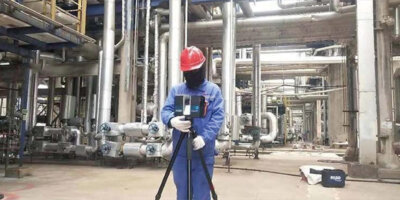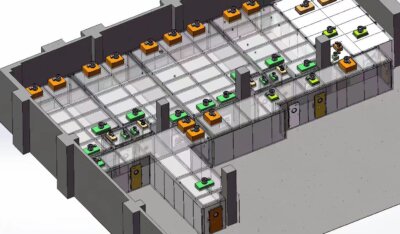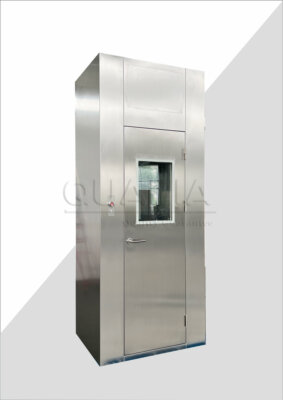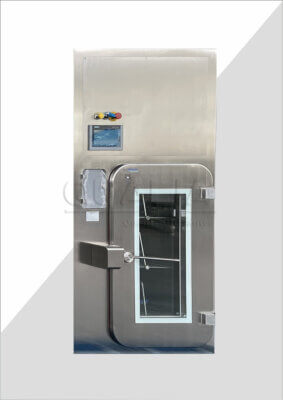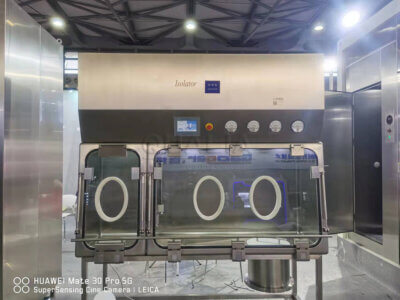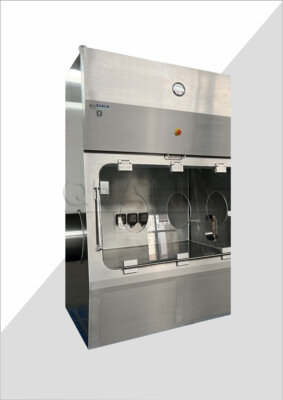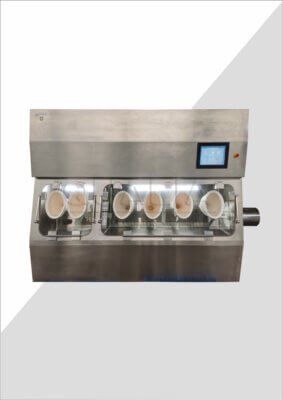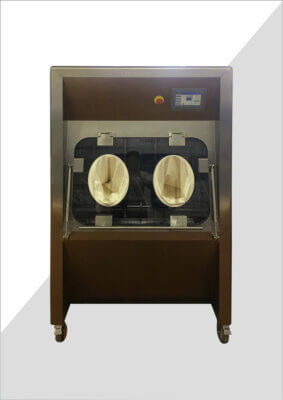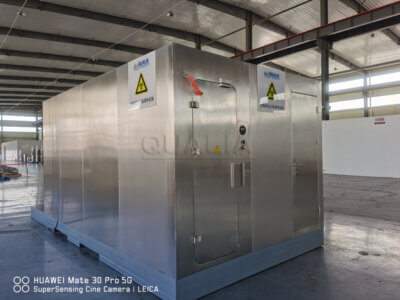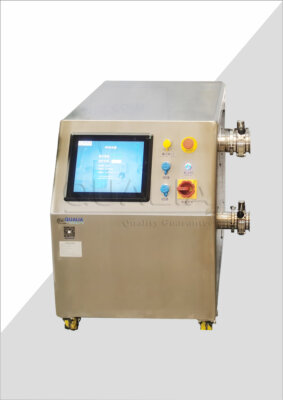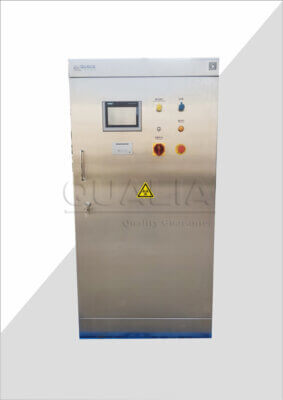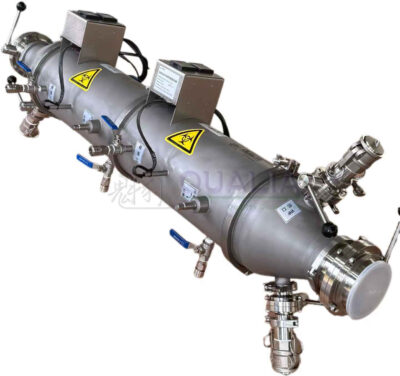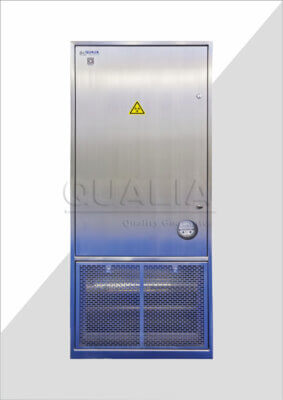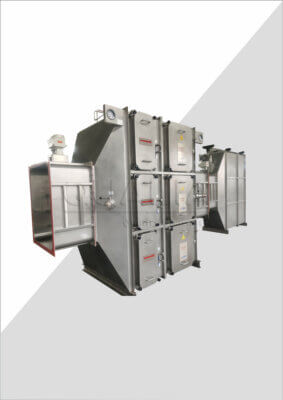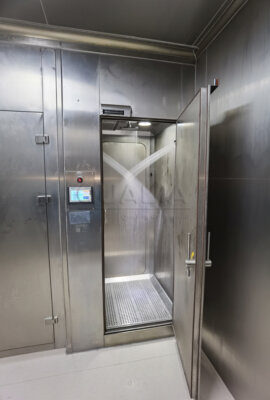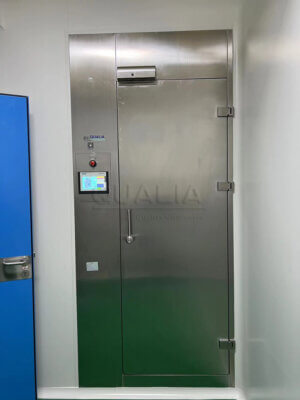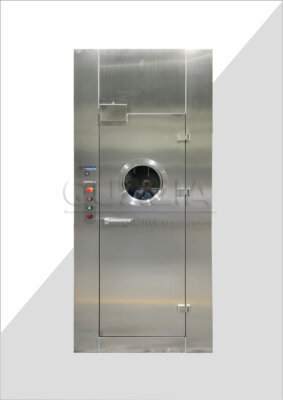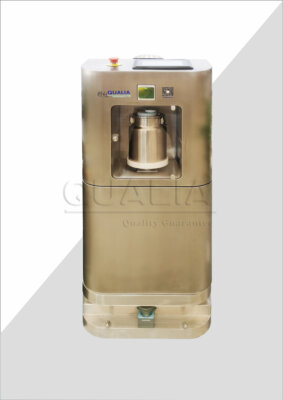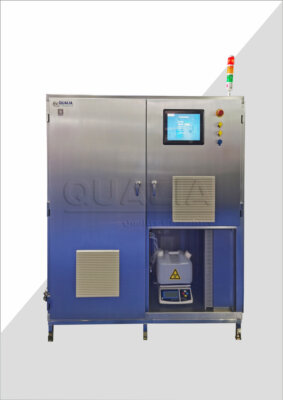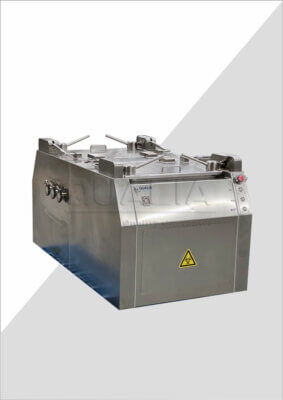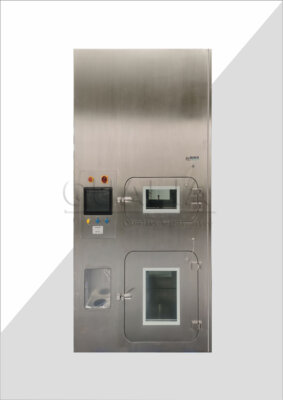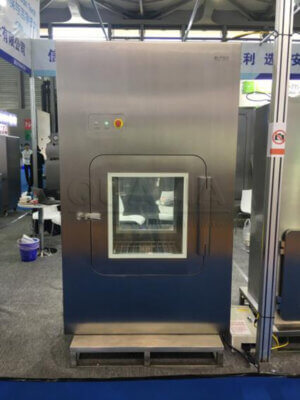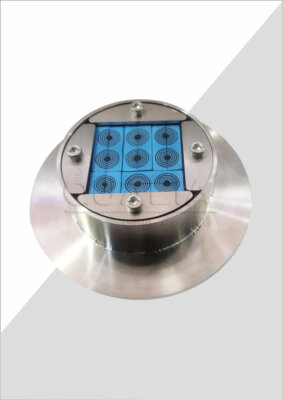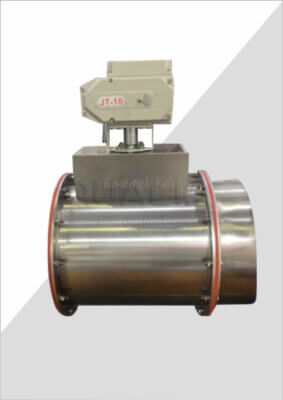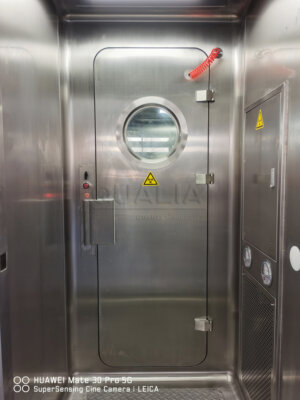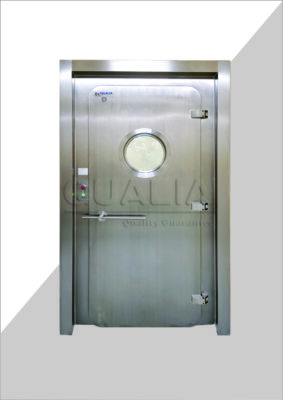Sterility testing is a critical process in the pharmaceutical industry, ensuring that drugs and medical products are free from harmful microorganisms before they reach patients. As the demand for sterile drugs continues to grow, manufacturers are increasingly turning to advanced technologies like isolators to maintain the highest standards of sterility and product quality. This article will explore the best practices for sterility testing of drugs using isolators, a cutting-edge approach that offers superior contamination control and efficiency.
In recent years, the use of isolators for sterility testing has become a gold standard in the pharmaceutical industry. These enclosed systems provide a highly controlled environment that minimizes the risk of contamination during the testing process. By implementing isolator technology, manufacturers can enhance the reliability of their sterility tests, improve operational efficiency, and ultimately ensure the safety of their products for patients.
As we delve into the world of sterility testing for drugs using isolators, we'll examine the key components of an effective testing program, the advantages of isolator technology, and the best practices that industry leaders are adopting to stay ahead of regulatory requirements and maintain the highest standards of product quality. From the latest advancements in isolator design to the critical role of personnel training, this comprehensive guide will provide valuable insights for pharmaceutical professionals looking to optimize their sterility testing processes.
Sterility testing using isolators has become the preferred method for ensuring the safety and quality of sterile drugs in the pharmaceutical industry.
What are the key components of an effective sterility testing program?
An effective sterility testing program is the cornerstone of quality assurance for sterile drugs. It encompasses a range of elements that work together to ensure the integrity and reliability of the testing process. From the selection of appropriate testing methods to the maintenance of a controlled environment, each component plays a crucial role in the overall success of the program.
At its core, a sterility testing program must be designed to detect any microbial contamination in drug products accurately and consistently. This requires a combination of well-defined procedures, state-of-the-art equipment, and highly trained personnel. The program should also be flexible enough to adapt to changing regulatory requirements and advancements in technology.
One of the most critical aspects of a sterility testing program is the use of appropriate controls and validation processes. These ensure that the testing methods are capable of detecting contamination if it is present and that the results are reproducible. Additionally, a comprehensive documentation system is essential for maintaining traceability and demonstrating compliance with regulatory standards.
A robust sterility testing program incorporates validated methods, stringent environmental controls, and comprehensive documentation to ensure the reliable detection of microbial contamination in sterile drugs.
| Component | Description | Importance |
|---|---|---|
| Testing Methods | Validated procedures for detecting microbial contamination | Critical for accurate results |
| Environmental Controls | Measures to maintain a sterile testing environment | Prevents false positives and ensures test integrity |
| Personnel Training | Ongoing education and certification of staff | Ensures proper execution of testing procedures |
| Documentation | Comprehensive record-keeping of all testing activities | Demonstrates compliance and enables traceability |
In conclusion, an effective sterility testing program is a multifaceted system that requires careful planning, implementation, and ongoing management. By focusing on these key components, pharmaceutical companies can build a robust foundation for ensuring the sterility and safety of their drug products.
How do isolators enhance the sterility testing process?
Isolators have revolutionized the sterility testing process by providing a highly controlled and isolated environment for conducting tests on sterile drugs. These advanced systems offer a range of benefits that significantly enhance the reliability and efficiency of sterility testing procedures. By creating a physical barrier between the testing area and the external environment, isolators minimize the risk of contamination and improve the overall quality of test results.
One of the primary advantages of using isolators is the reduction in human intervention during the testing process. This minimizes the potential for human-borne contamination, which is a significant concern in traditional open cleanroom environments. Isolators also provide a more consistent and controllable testing environment, with precise regulation of temperature, humidity, and air quality.
Furthermore, isolators enable more efficient use of resources and space within pharmaceutical facilities. They can be designed to accommodate specific testing needs and can often be integrated with other automated systems to streamline the entire testing workflow. This level of customization and efficiency is particularly valuable in high-volume manufacturing settings where rapid and reliable sterility testing is crucial.
Isolators provide a superior testing environment for sterile drugs by minimizing contamination risks, reducing human intervention, and offering precise control over environmental conditions.
| Feature | Benefit | Impact on Testing |
|---|---|---|
| Physical Barrier | Prevents external contamination | Improves test reliability |
| Controlled Environment | Maintains consistent conditions | Enhances reproducibility of results |
| Reduced Human Intervention | Minimizes human-borne contamination | Decreases false positive rates |
| Customizable Design | Adapts to specific testing needs | Increases operational efficiency |
In conclusion, isolators have become an indispensable tool in modern sterility testing programs. Their ability to create a highly controlled testing environment while reducing contamination risks makes them an ideal choice for pharmaceutical companies striving to maintain the highest standards of product quality and patient safety.
What are the best practices for designing and implementing isolator systems?
Designing and implementing isolator systems for sterility testing requires careful consideration of various factors to ensure optimal performance and compliance with regulatory standards. The process begins with a thorough assessment of the facility's specific needs, including the types of products to be tested, the expected volume of testing, and any space constraints.
Best practices for isolator design include incorporating features that facilitate easy cleaning and decontamination, such as smooth surfaces and minimal crevices. The materials used in construction should be resistant to cleaning agents and compatible with the sterilization methods employed. Additionally, the design should allow for efficient workflow and ergonomic operation to minimize operator fatigue and errors.
Implementing an isolator system involves more than just installation; it requires a comprehensive validation process to ensure that the system performs as intended. This includes testing the integrity of the isolator's containment, verifying the effectiveness of the decontamination systems, and qualifying the environmental conditions within the isolator. Proper training of personnel on the operation and maintenance of the isolator is also crucial for successful implementation.
Effective isolator design and implementation focus on creating a system that is not only technically sound but also user-friendly and easily maintainable, ensuring long-term reliability in sterility testing of drugs.
| Design Aspect | Consideration | Impact |
|---|---|---|
| Material Selection | Chemical resistance and compatibility | Ensures longevity and ease of maintenance |
| Ergonomics | Operator comfort and efficiency | Reduces errors and improves productivity |
| Decontamination Systems | Effectiveness and ease of use | Maintains sterile conditions between tests |
| Validation Protocols | Comprehensive testing of all systems | Demonstrates compliance and reliability |
In conclusion, the successful design and implementation of isolator systems for sterility testing require a holistic approach that considers both technical performance and practical usability. By adhering to these best practices, pharmaceutical companies can create a robust and efficient testing environment that supports the production of high-quality sterile drugs.
How do regulatory requirements influence isolator-based sterility testing?
Regulatory requirements play a pivotal role in shaping the practices and standards for isolator-based sterility testing in the pharmaceutical industry. Agencies such as the FDA, EMA, and WHO have established stringent guidelines that manufacturers must follow to ensure the safety and efficacy of sterile drugs. These regulations influence everything from the design of isolator systems to the procedures used for testing and documentation.
One of the key aspects of regulatory compliance is the validation of isolator systems and testing methods. Manufacturers must demonstrate that their isolators can consistently maintain the required level of sterility and that their testing procedures can reliably detect contamination. This often involves extensive documentation, performance qualification, and ongoing monitoring to ensure compliance with good manufacturing practices (GMP).
Regulatory bodies also emphasize the importance of risk management in sterility testing. This includes identifying potential sources of contamination, implementing appropriate control measures, and establishing robust monitoring systems. As regulations evolve, manufacturers must stay informed and adapt their practices accordingly to maintain compliance and ensure the continued safety of their products.
Regulatory compliance in isolator-based sterility testing requires a comprehensive approach that encompasses system validation, risk management, and continuous improvement to meet the evolving standards for sterile drug production.
| Regulatory Aspect | Requirement | Impact on Testing |
|---|---|---|
| System Validation | Demonstration of consistent performance | Ensures reliability of test results |
| Risk Management | Identification and mitigation of potential risks | Enhances overall product safety |
| Documentation | Comprehensive records of all testing activities | Facilitates regulatory inspections and audits |
| Continuous Monitoring | Ongoing assessment of system performance | Enables proactive maintenance and improvement |
In conclusion, regulatory requirements serve as a driving force for excellence in isolator-based sterility testing. By aligning their practices with these standards, pharmaceutical companies can not only ensure compliance but also foster a culture of quality that ultimately benefits patient safety and public health.
What role does personnel training play in ensuring effective isolator use?
Personnel training is a critical component in ensuring the effective use of isolators for sterility testing of drugs. The complexity of isolator systems and the stringent requirements for maintaining a sterile environment necessitate a comprehensive and ongoing training program for all staff involved in the testing process.
Effective training programs cover a wide range of topics, including the principles of aseptic technique, proper operation of isolator equipment, and understanding of relevant regulatory requirements. Hands-on practice in simulated environments is often incorporated to allow personnel to develop the necessary skills and confidence before working with actual drug products.
Beyond initial training, continuous education and assessment are essential to maintain high standards of performance. This may include regular refresher courses, competency evaluations, and updates on new technologies or regulatory changes. Additionally, training programs should foster a culture of quality and emphasize the critical role that each individual plays in ensuring product safety.
Comprehensive and ongoing personnel training is fundamental to the successful implementation of isolator-based sterility testing, ensuring that operators have the knowledge and skills to maintain sterility and produce reliable test results.
| Training Aspect | Description | Importance |
|---|---|---|
| Aseptic Technique | Proper procedures for maintaining sterility | Prevents contamination during testing |
| Equipment Operation | Correct use and maintenance of isolators | Ensures optimal performance of testing systems |
| Regulatory Knowledge | Understanding of relevant guidelines and standards | Facilitates compliance and quality assurance |
| Continuous Education | Ongoing learning and skill development | Keeps personnel up-to-date with best practices |
In conclusion, investing in thorough and continuous personnel training is crucial for maximizing the benefits of isolator technology in sterility testing. Well-trained staff are better equipped to handle the challenges of maintaining a sterile environment, ensuring the integrity of test results, and ultimately contributing to the production of safe and high-quality sterile drugs.
How can environmental monitoring enhance isolator performance?
Environmental monitoring plays a crucial role in maintaining the performance and integrity of isolators used in sterility testing for drugs. By continuously assessing the conditions within and around the isolator, manufacturers can ensure that the testing environment remains suitable for producing accurate and reliable results.
A comprehensive environmental monitoring program typically includes regular checks of various parameters such as air quality, particle counts, microbial contamination, temperature, and humidity. These assessments help identify any deviations from the required specifications and allow for prompt corrective actions to be taken.
Advanced monitoring systems often incorporate real-time sensors and data logging capabilities, enabling continuous tracking of environmental conditions. This not only helps in maintaining optimal testing conditions but also provides valuable data for trend analysis and process improvement. Additionally, environmental monitoring data serves as crucial documentation for regulatory compliance and quality assurance purposes.
Robust environmental monitoring is essential for maintaining the performance of isolators in sterility testing, providing real-time insights into the testing environment and supporting continuous improvement efforts.
| Monitoring Parameter | Importance | Frequency |
|---|---|---|
| Air Quality | Ensures absence of contaminants | Continuous |
| Particle Counts | Monitors cleanliness of isolator | Daily/Weekly |
| Microbial Contamination | Verifies sterility of environment | Weekly/Monthly |
| Temperature and Humidity | Maintains optimal conditions for testing | Continuous |
In conclusion, environmental monitoring is a critical component of effective isolator use in sterility testing. By implementing a comprehensive monitoring program, pharmaceutical companies can ensure the reliability of their testing processes, maintain compliance with regulatory standards, and ultimately contribute to the production of safe and high-quality sterile drugs.
What are the latest technological advancements in isolator design?
The field of isolator technology for sterility testing is continuously evolving, with new advancements aimed at improving efficiency, reliability, and ease of use. These innovations are reshaping the landscape of sterile drug manufacturing and quality control processes.
One of the most significant recent developments is the integration of robotics and automation into isolator systems. Robotic arms and automated sample handling systems can now perform many of the repetitive tasks involved in sterility testing, reducing the need for human intervention and minimizing the risk of contamination. This not only improves the consistency of testing procedures but also increases throughput and efficiency.
Another area of innovation is in materials science, with new materials being developed that offer improved chemical resistance, easier cleaning, and better compatibility with various sterilization methods. These advanced materials contribute to longer-lasting isolator systems and reduced maintenance requirements.
The latest isolator designs incorporate advanced automation, innovative materials, and smart monitoring systems to enhance the efficiency and reliability of sterility testing for drugs.
| Innovation | Benefit | Impact on Testing |
|---|---|---|
| Robotic Integration | Reduced human intervention | Improved consistency and reduced contamination risk |
| Advanced Materials | Enhanced durability and cleanability | Lower maintenance costs and improved sterility assurance |
| Smart Monitoring | Real-time environmental control | Enhanced process control and data integrity |
| Rapid Transfer Systems | Faster material transfer | Increased efficiency and reduced contamination risk |
In conclusion, the ongoing technological advancements in isolator design are significantly enhancing the capabilities and performance of sterility testing systems. By staying at the forefront of these innovations, pharmaceutical companies can improve their testing processes, ensure higher levels of product quality, and maintain compliance with evolving regulatory standards.
How can companies optimize their sterility testing workflows using isolators?
Optimizing sterility testing workflows using isolators is a critical step for pharmaceutical companies looking to enhance efficiency, reduce costs, and maintain the highest standards of product quality. By carefully analyzing and refining each step of the testing process, companies can achieve significant improvements in their overall sterility assurance program.
One key aspect of workflow optimization is the integration of isolators with other systems and processes within the facility. This may include automated sample preparation systems, rapid microbial detection methods, and laboratory information management systems (LIMS). By creating a seamless flow of materials and information, companies can reduce bottlenecks and improve overall testing efficiency.
Another important consideration is the layout and design of the testing area. Optimizing the placement of isolators, support equipment, and materials can significantly improve workflow efficiency and reduce the risk of errors or contamination. Additionally, implementing lean manufacturing principles can help identify and eliminate waste in the testing process.
Effective optimization of sterility testing workflows requires a holistic approach that considers equipment integration, facility layout, and process efficiency to maximize the benefits of isolator technology.
| Optimization Area | Strategy | Benefit |
|---|---|---|
| System Integration | Connecting isolators with automated systems | Improved efficiency and reduced human error |
| Facility Layout | Optimizing placement of equipment and materials | Enhanced workflow and reduced contamination risk |
| Process Standardization | Developing and implementing SOPs | Consistency in testing procedures |
| Data Management | Implementing LIMS for real-time data tracking | Improved traceability and decision-making |
In conclusion, optimizing sterility testing workflows using isolators is an ongoing process that requires careful planning, implementation, and continuous improvement. By focusing on these key areas, pharmaceutical companies can significantly enhance their testing capabilities, ensuring the production of safe and high-quality sterile drugs while meeting regulatory requirements and maintaining operational efficiency.
In conclusion, sterility testing for drugs using isolators represents a critical advancement in pharmaceutical quality control. The implementation of isolator technology offers numerous benefits, including enhanced contamination control, improved efficiency, and greater reliability in test results. As we've explored throughout this article, success in this area requires a comprehensive approach that encompasses careful system design, rigorous personnel training, advanced environmental monitoring, and continuous process optimization.
The pharmaceutical industry's adoption of isolator technology for sterility testing reflects a broader commitment to ensuring the highest standards of product safety and quality. By leveraging the latest advancements in isolator design and implementing best practices in their use, companies can significantly enhance their ability to produce safe and effective sterile drugs.
As regulatory requirements continue to evolve and new technologies emerge, it's clear that the field of sterility testing will remain dynamic. Companies that invest in cutting-edge isolator systems, like those offered by QUALIA, and maintain a focus on continuous improvement will be well-positioned to meet these challenges head-on.
Ultimately, the goal of sterility testing is to ensure the safety of patients who rely on sterile drug products. By embracing isolator technology and adhering to best practices, the pharmaceutical industry can continue to advance this critical mission, delivering high-quality, sterile drugs that meet the highest standards of safety and efficacy.
External Resources
Sterile Drug Substance Manufacturers – This guide from the FDA outlines the major processing steps involved in the manufacture of sterile bulk drug substances, including conversion, sterilization, aseptic precipitation, and aseptic sampling and packaging.
The Future of Sterile Pharmaceutical Manufacturing – This article discusses the importance of aseptic processing in sterile drug manufacturing, recent innovations, regulatory compliance, and the future outlook of sterile manufacturing, including advancements in automation and single-use technologies.
Sterile Injectables: What They Are and How They're Manufactured – This resource provides an in-depth look at sterile injectables, their applications, and the specialized manufacturing processes involved, including terminal sterilization and aseptic fill-finish methods.
WHO Good Manufacturing Practices for Sterile Pharmaceutical Products – This document from the World Health Organization outlines the good manufacturing practices for sterile pharmaceutical products, including clean area classifications, quality control, and sterilization methods.
Sterile Injectable Drugs Defined – This article defines sterile injectable drugs, explains their manufacturing process, and highlights the stringent regulations and specialized equipment required for their production.
Aseptic Processing of Sterile Drug Products – This FDA guidance provides detailed information on aseptic processing, including the sterilization of components, the use of cleanrooms, and the importance of minimizing contamination risks.
Sterile Manufacturing: Ensuring Product Quality and Patient Safety – This article focuses on the critical aspects of sterile manufacturing, including the role of cleanrooms, personnel training, and advanced technologies to ensure product quality and patient safety.
Sterilization Methods for Pharmaceutical Products – This resource discusses various sterilization methods used in pharmaceutical manufacturing, such as terminal sterilization, aseptic processing, and sterilization by filtration, highlighting their applications and limitations.
Related Contents:
- Medical Device Testing in Sterility Isolators
- Sterility Test Isolators for Pharmaceutical Products
- Sterility Test Isolators in QC: Enhancing Operations
- Controlled Environments in Sterility Test Isolators
- Sterility Testing: Biosafety Isolator Protocols
- Sterility Testing Ophthalmic Ointments in Isolators
- Sterility Test Isolators: Optimizing Testing Chambers
- Sterility Testing in OEB4/OEB5 Isolators: Best Methods
- Sterility Test Isolators: Aseptic Isolation Systems


